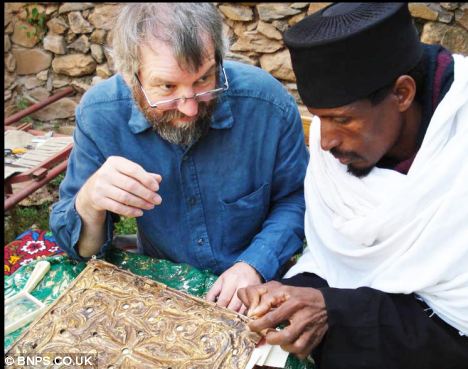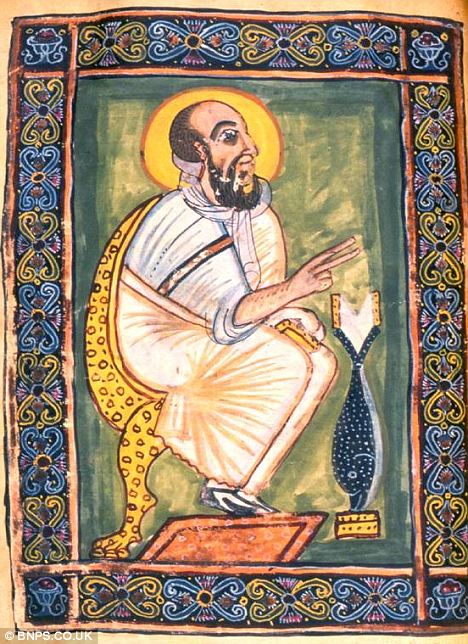The world’s earliest illustrated Christian book has been saved by a British charity which located it at a remote Ethiopian monastery.
 The incredible Garima Gospels are named after a monk who arrived in the African country in the fifth century and is said to have copied them out in just one day.
The incredible Garima Gospels are named after a monk who arrived in the African country in the fifth century and is said to have copied them out in just one day.
Beautifully illustrated, the colours are still vivid and thanks to the Ethiopian Heritage Fund have been conserved.
Abba Garima arrived from Constantinople in 494 AD and legend has it that he was able to copy the gospels in a day because God delayed the sun from setting.
The incredible relic has been kept ever since in the Garima Monastery near Adwa in the north of the country, which is in the Tigray region at 7,000 feet.
Experts believe it is also the earliest example of book binding still attached to the original pages.
The survival of the Gospels is incredible considering the country has been under Muslim invasion, Italian invasion and a fire in the 1930s destroyed the monastery’s church.
They were written on goat skin in the early Ethiopian language of Ge’ez.
There are two volumes which date from the same time, but the second is written in a different hand from the first. Both contain illustrations and the four Gospels.
Though the texts had been mentioned by the occasional traveller since the 1950s, it had been thought they dated from the 11th century at the earliest.
Carbon dating, however, gives a date between 330 and 650 – which tantalisingly overlaps the date Abba Garima arrived in the country.
 So the first volume could be in his hand – even if he didn’t complete the task in a day as the oral tradition states.
So the first volume could be in his hand – even if he didn’t complete the task in a day as the oral tradition states.
The charity Ethiopian Heritage Fund that was set up to help preserve the treasures in the country has made the stunning discovery.
It was also allowed incredibly rare access to the texts so experts could conserve them on site.
It is now hoped the Gospels will be put in a museum at the monastery where visitors will be able to view them.
Blair Priday from the Ethiopian Heritage Fund said: ‘Ethiopia has been overlooked as a source of these fantastic things.
‘Many of these old Christian relics can only be reached by hiking and climbing to remote monasteries as roads are limited in these mountainous regions.
‘All the work on the texts was done in situ and everything is reversible, so if in future they can be taken away for further conservation we won’t have hindered that.
‘The pages had been crudely stitched together in a restoration in the 1960s and some of the pages wouldn’t even turn. And they were falling to pieces.
‘The Garima Gospels have been kept high and dry which has helped preserve them all these years and they are kept in the dark so the colours look fresh.
‘This was the most astounding of all our projects and the Patriarch, the head of the Ethiopian Church, had to give his permission.
‘Most of the experts did the work for nothing.
‘We are currently undertaking other restoration programmes on wall paintings and religious texts.
‘We believe that preserving Ethiopia’s cultural heritage will help to increase visitor revenue and understanding of the extraordinary history of this country.